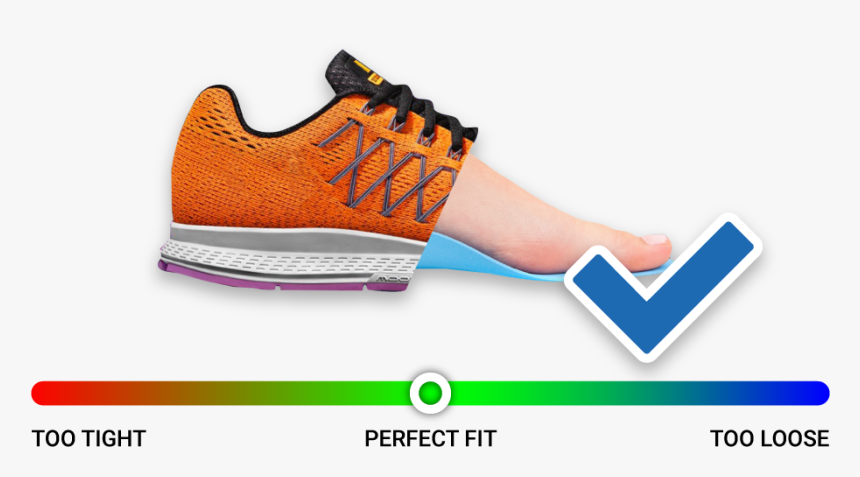How Tight Should Tennis Shoes Be: Having the right pair of shoes is essential for your performance when playing tennis. Tennis shoes are designed to provide support, stability and comfort while you move around the court. However, one question often arises how tight tennis shoes should be. The answer isn’t as simple as a single word or number. When trying on tennis shoes, wear the right socks you plan on playing in.
It will give you an accurate feel of how the shoe fits with all intended layers. When lacing up your shoes, ensure they are snug around your heel and midfoot areas, as this will reduce any unnecessary slipping or sliding during play. You should also have enough room in the toe box area so that your toes can wiggle slightly but don’t have too much space where they slide inside.
Factors Affecting Tennis Shoe Fit
When it comes to playing tennis, one of the most important pieces of equipment is your shoes. Not only do they provide support and comfort, but they also play a crucial role in your performance on the court. However, finding the right fit can be tricky as several factors affect tennis shoe fit. You may be interested in this also: Best Tennis Shoes
- One of the primary factors is foot shape. Everyone’s feet are unique and have different shapes, sizes, and arches. It is important to find shoes that cater to your specific foot type.
- Another factor affecting tennis shoe fit is cushioning.
- Tennis involves a lot of impact on your feet, which can lead to injuries if not properly cushioned with appropriate footwear.
- Furthermore, stability is also an essential aspect that needs consideration while choosing tennis shoes since it determines how well you’ll be able to move around on the court without injuring yourself or losing balance during gameplay.
How Tight Should Tennis Shoes Be?
Regarding tennis shoes, getting the right fit is crucial for a comfortable and safe game. But how tight should tennis shoes be? The answer may vary depending on the player’s preference and playing style.
Generally, tennis shoes should fit snugly but not too tight. You want to avoid discomfort or pain while playing and prevent injuries, such as blisters or sprains. It’s recommended to have a thumb width of space between your longest toe and the end of the shoe to ensure enough room for movement.
It’s also important to consider the type of court surface you’ll be playing on. Hard courts need a tighter fit for stability and support during quick movements. On clay courts, players may prefer a slightly looser fit for better sliding traction and flexibility.
Signs of a Poorly Fitted Tennis Shoe
Choosing the right pair of tennis shoes is crucial for comfort and performance on the court. A poorly fitted shoe can cause discomfort, pain, and even injury. Here are some signs that your tennis shoes are not providing you properly:
- Firstly, if your toes are touching the front of the shoe or there is no space between your big toe and the end, it’s a sign that your tennis shoes are too small for you.
- Secondly, if you feel any pressure points or tightness around your foot while wearing them, it could indicate they do not fit well.
- Thirdly, if the laces cannot be tightened well enough to keep your foot secure within the shoe, then this can lead to instability and possible injury during play.
Common Mistakes When Selecting Tennis Shoes
Choosing the right tennis shoes can significantly impact your performance on the court. Unfortunately, many players make common mistakes when selecting their footwear, leading to discomfort and injury. Here are some common errors to avoid when choosing your next pair of tennis shoes.
- Firstly, one mistake is buying shoes that are too small or too big. Tennis shoes should fit snugly without being too tight or too loose. When trying new shoes, ensure enough room in the toe box for your toes to move while ensuring that your heel doesn’t slip out of the back.
- Secondly, failing to consider your foot type can pose problems if you have high arches or flat feet. Look for tennis shoes designed specifically for these types of feet, as this will provide better support and help prevent injuries such as plantar fasciitis.
Why Proper Tennis Shoe Fit Matters?
Why Proper Tennis Shoe Fit Matters? If you’re a tennis player, you know how important it is to wear the right shoes on the court. Tennis is a high-impact sport requiring many running, jumping, and sudden stops. Wearing the wrong shoes can increase your risk of injury and negatively impact your performance.
The proper tennis shoe fit matters because it ensures that your feet are well-supported and protected during play. The right fit will prevent blisters, calluses, and other foot-related issues that can sideline you from playing at your best. It also helps to prevent ankle sprains or other injuries caused by poor support or improper shoe design. Investing in proper tennis shoes that fit correctly is essential for any serious player looking to improve their game and stay healthy on the court.
FAQs
How snug should a tennis shoe fit?
A tennis shoe should fit snugly but not too tight, with enough room for your toes to move comfortably and your feet to breathe.
Is it better for tennis shoes to be too big or too small?
It’s generally better for tennis shoes to be slightly too big rather than too small, as tight shoes can cause discomfort, blisters, and other foot problems. However, finding the right fit for optimal performance and injury prevention is important.
Should tennis shoes be loose?
Tennis shoes should not be too loose but rather fit snugly with enough room for your toes to move comfortably and your feet to breathe. However, they should not be too tight, which can cause discomfort and foot problems.
Final Thoughts
In conclusion, the perfect fit for a pair of tennis shoes is a matter of preference. Although it may be tempting to size down for a snugger fit, selecting the correct shoe size for comfort and support is important. A good tip to help find the right fit is to choose a half size up if your feet are between sizes. Additionally, try both styles – lace-up or slip-on – and ensure you have space around your toes while standing or walking in them.






